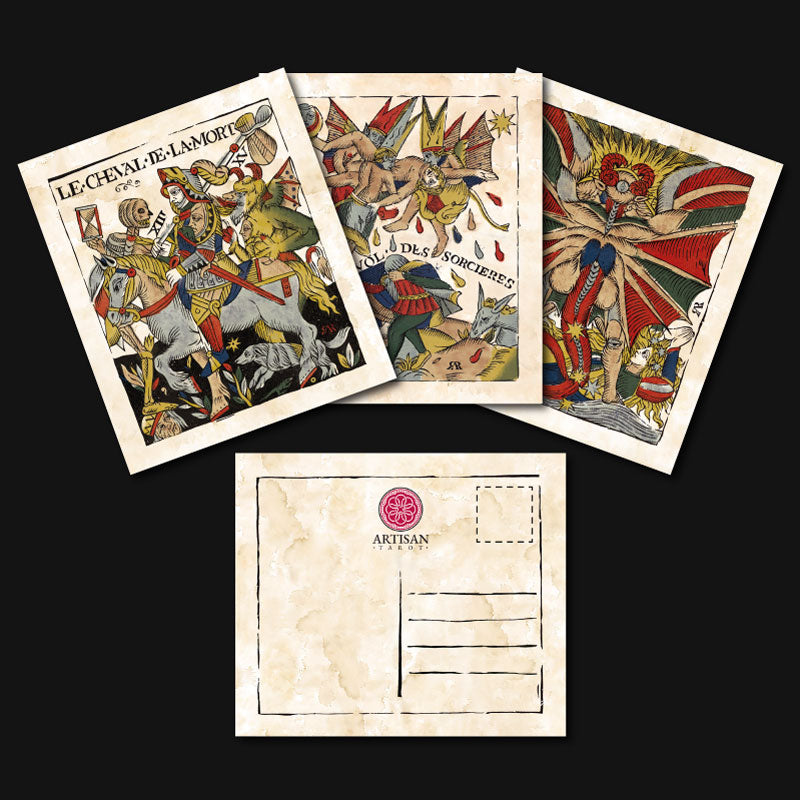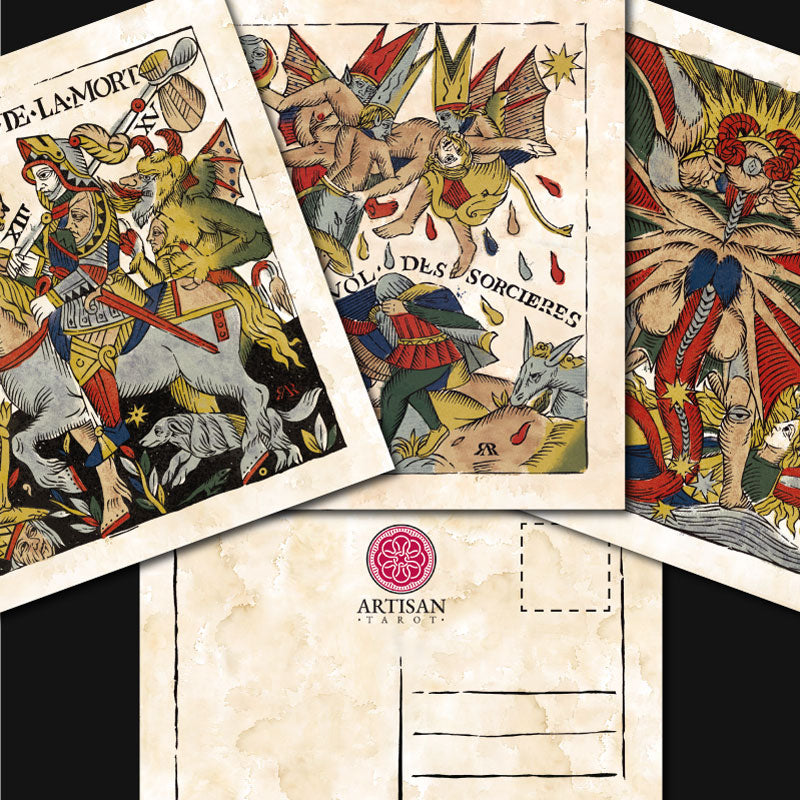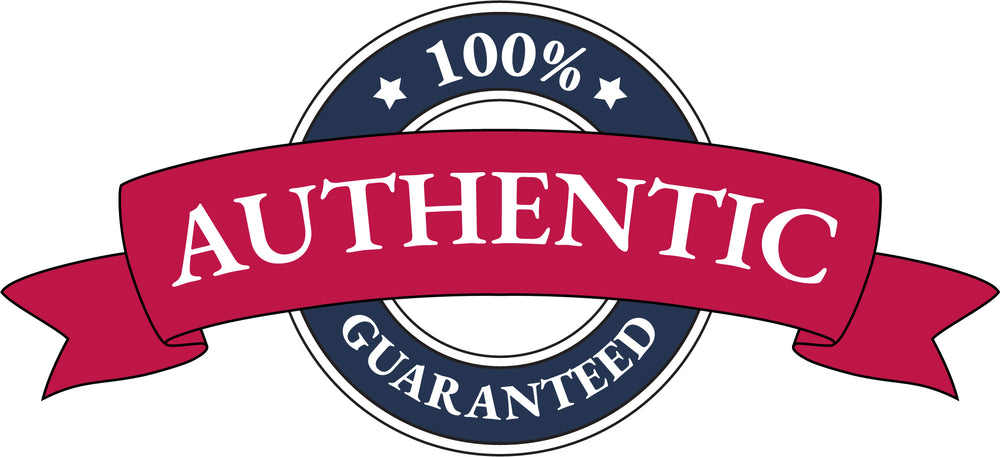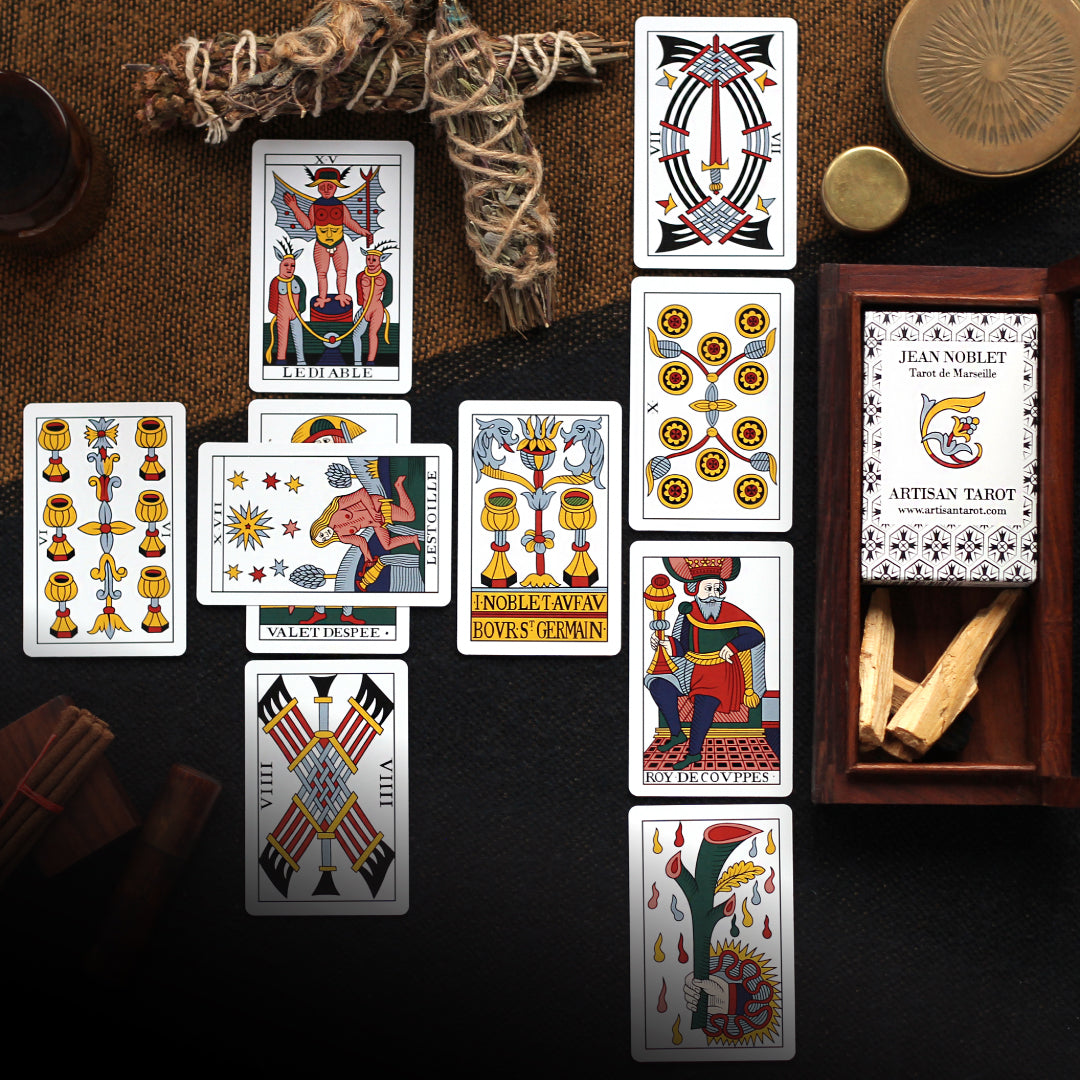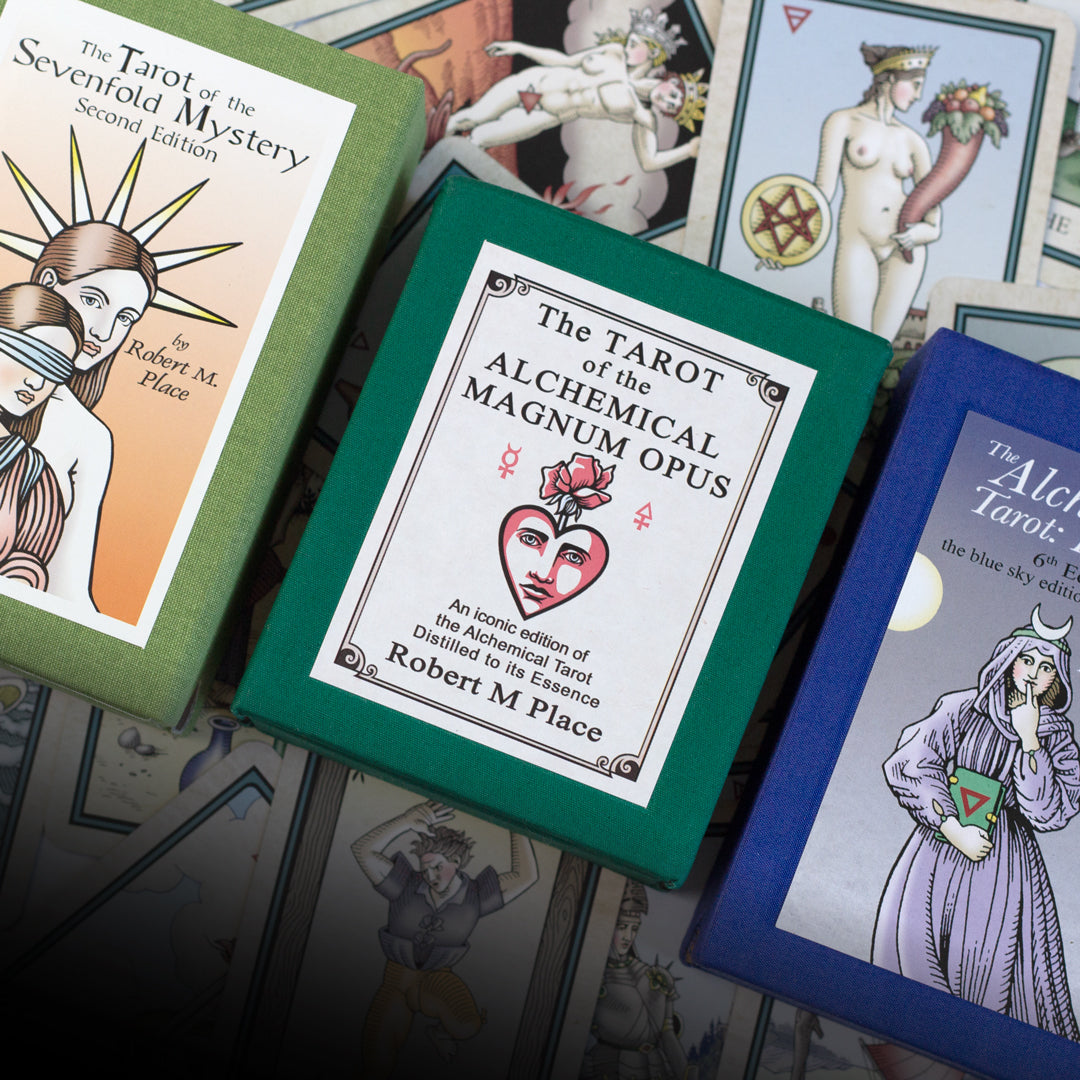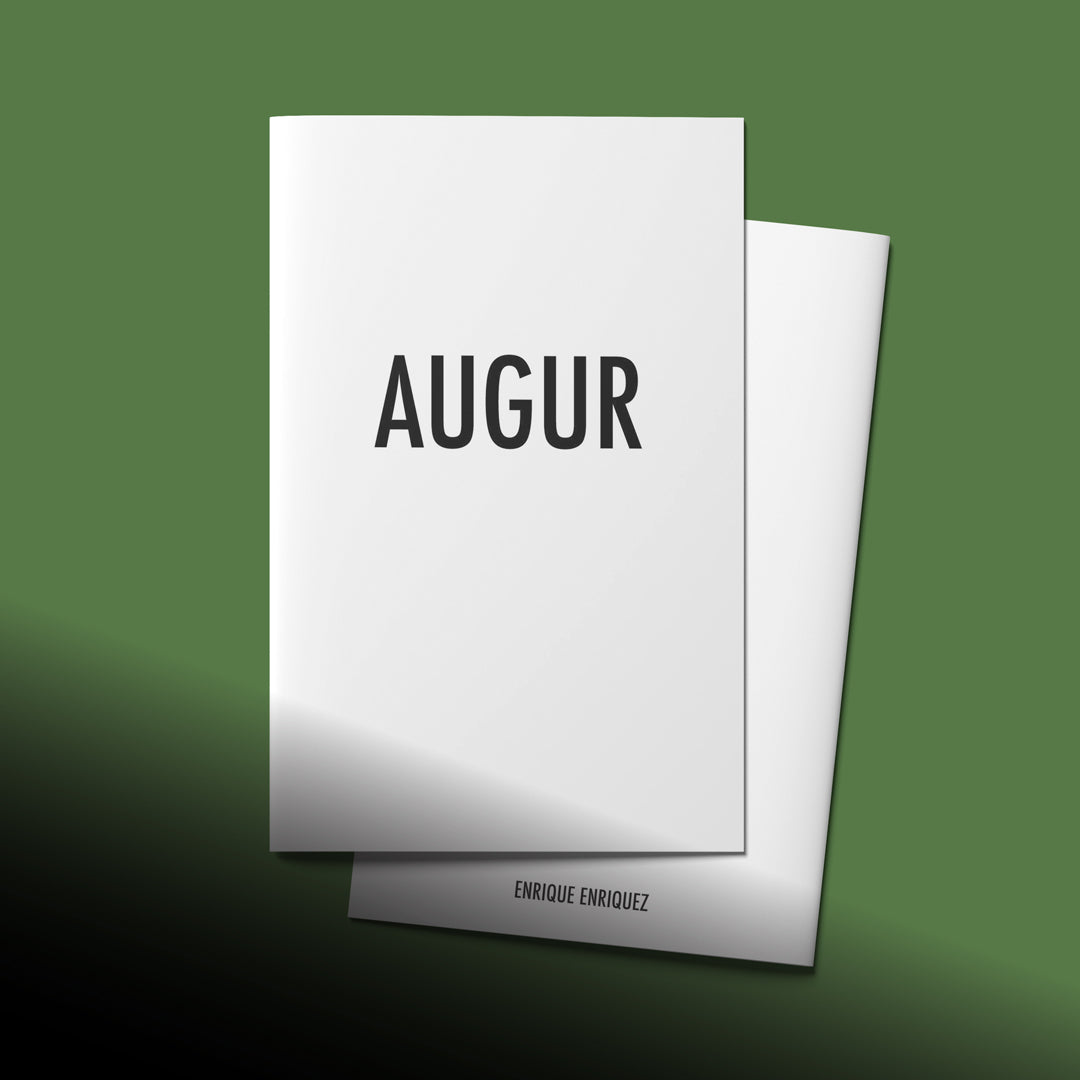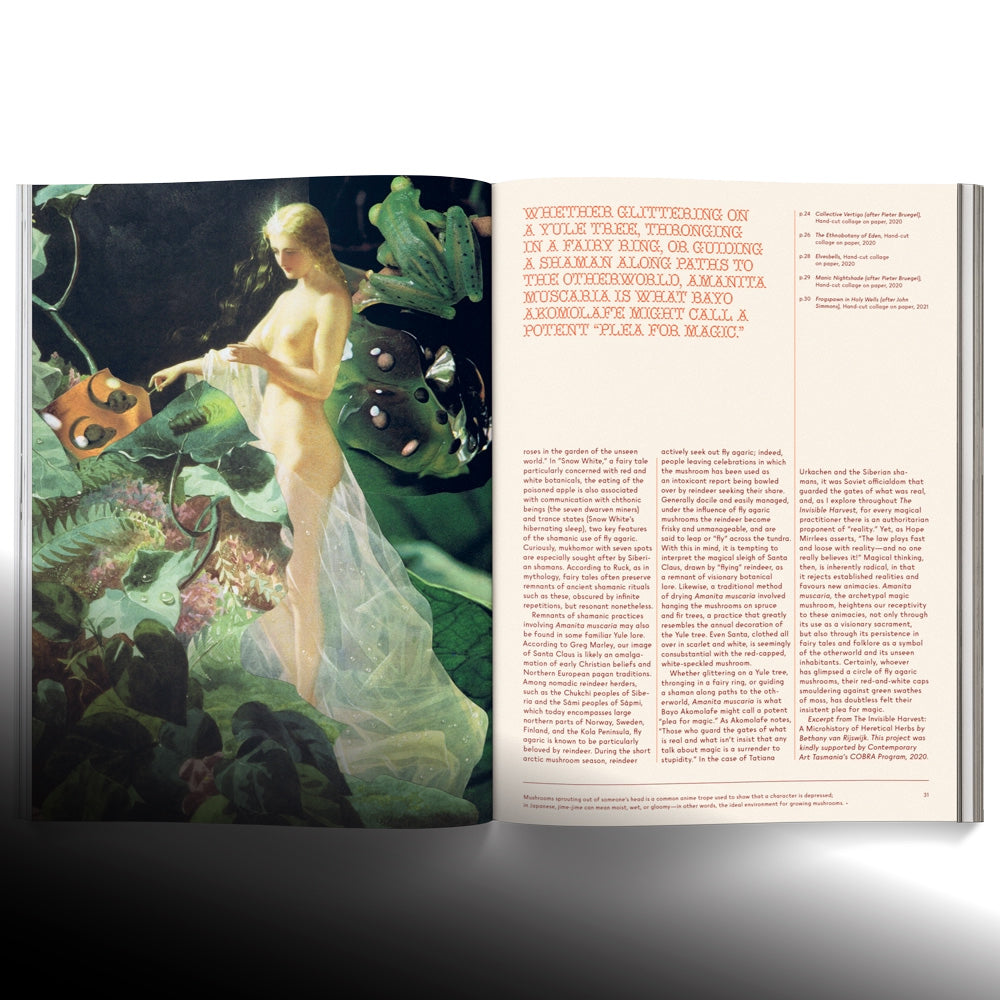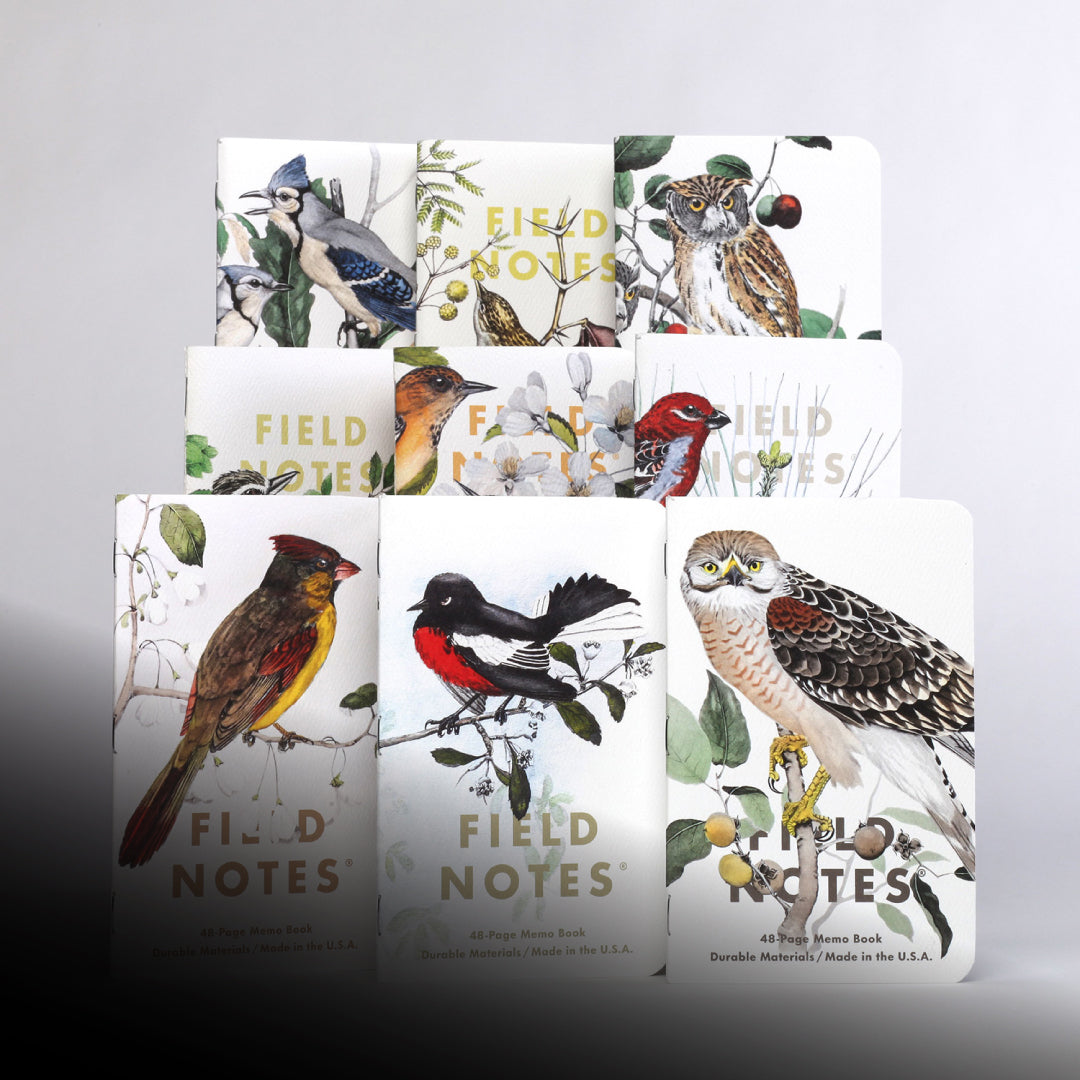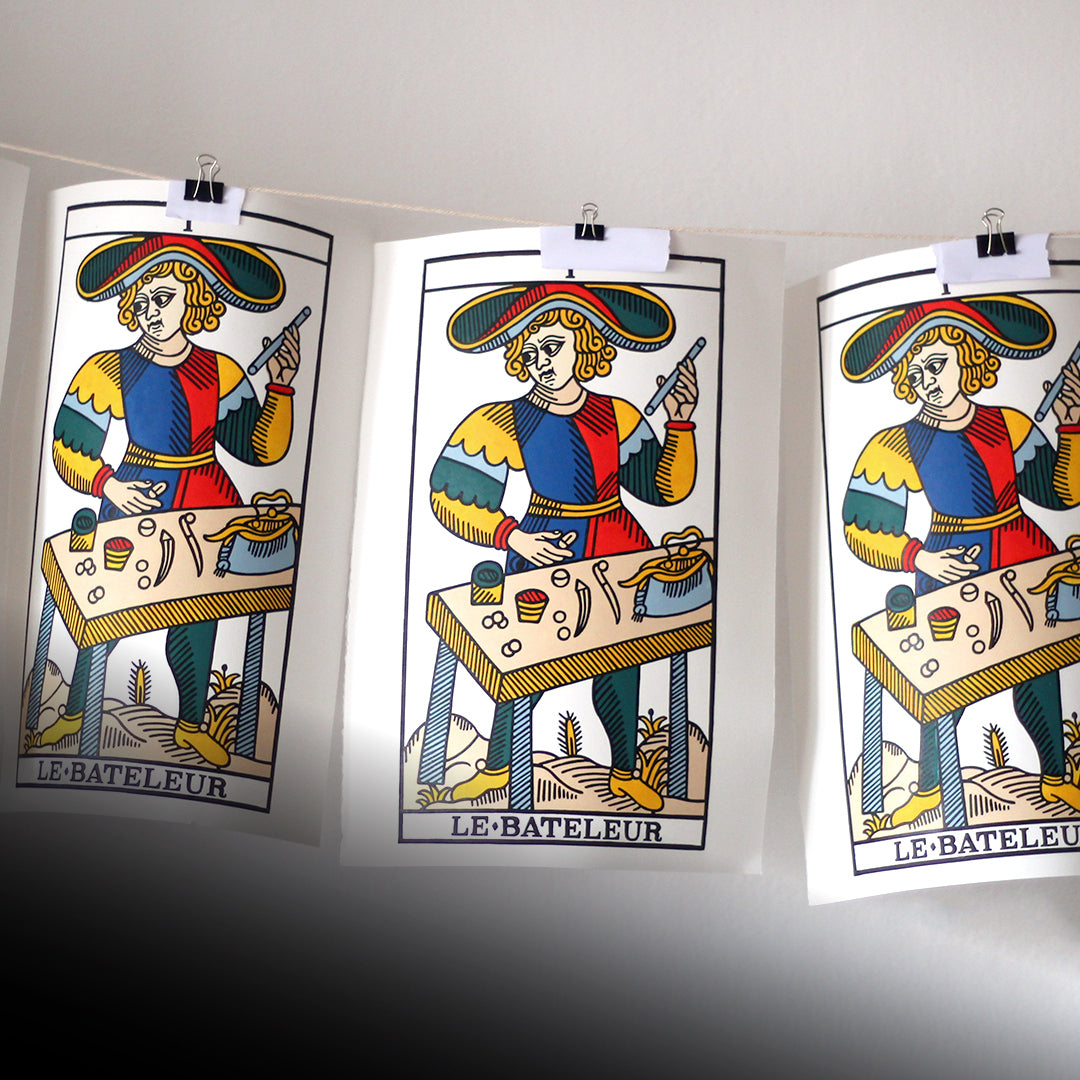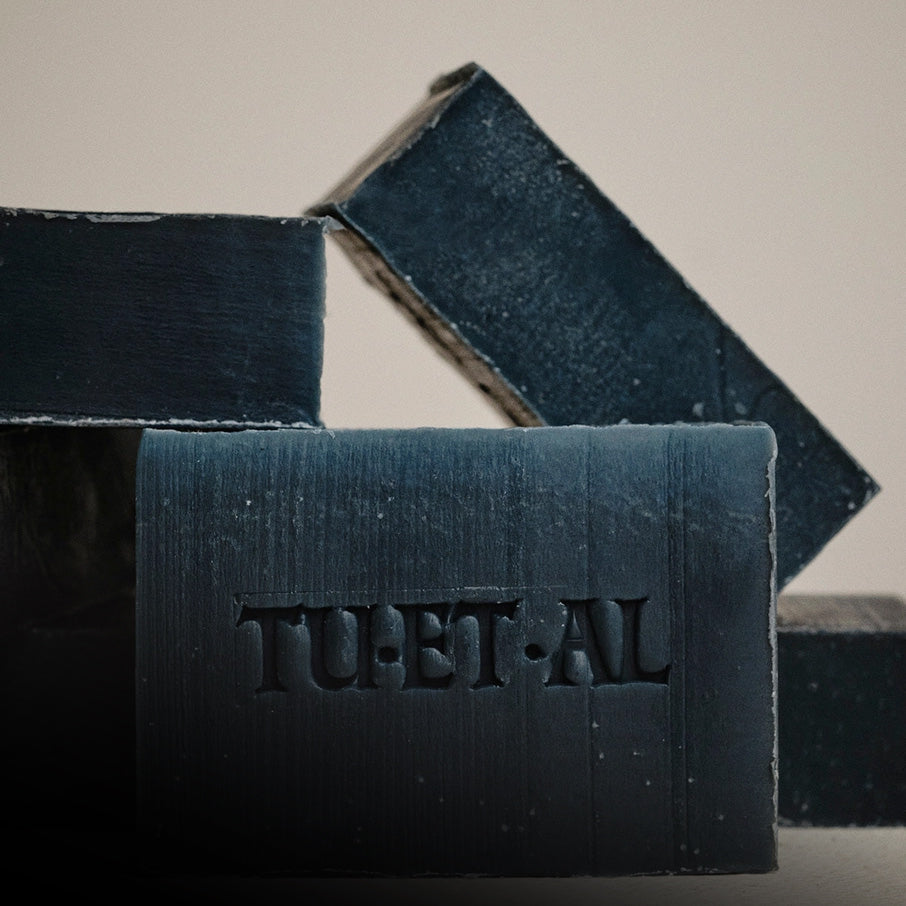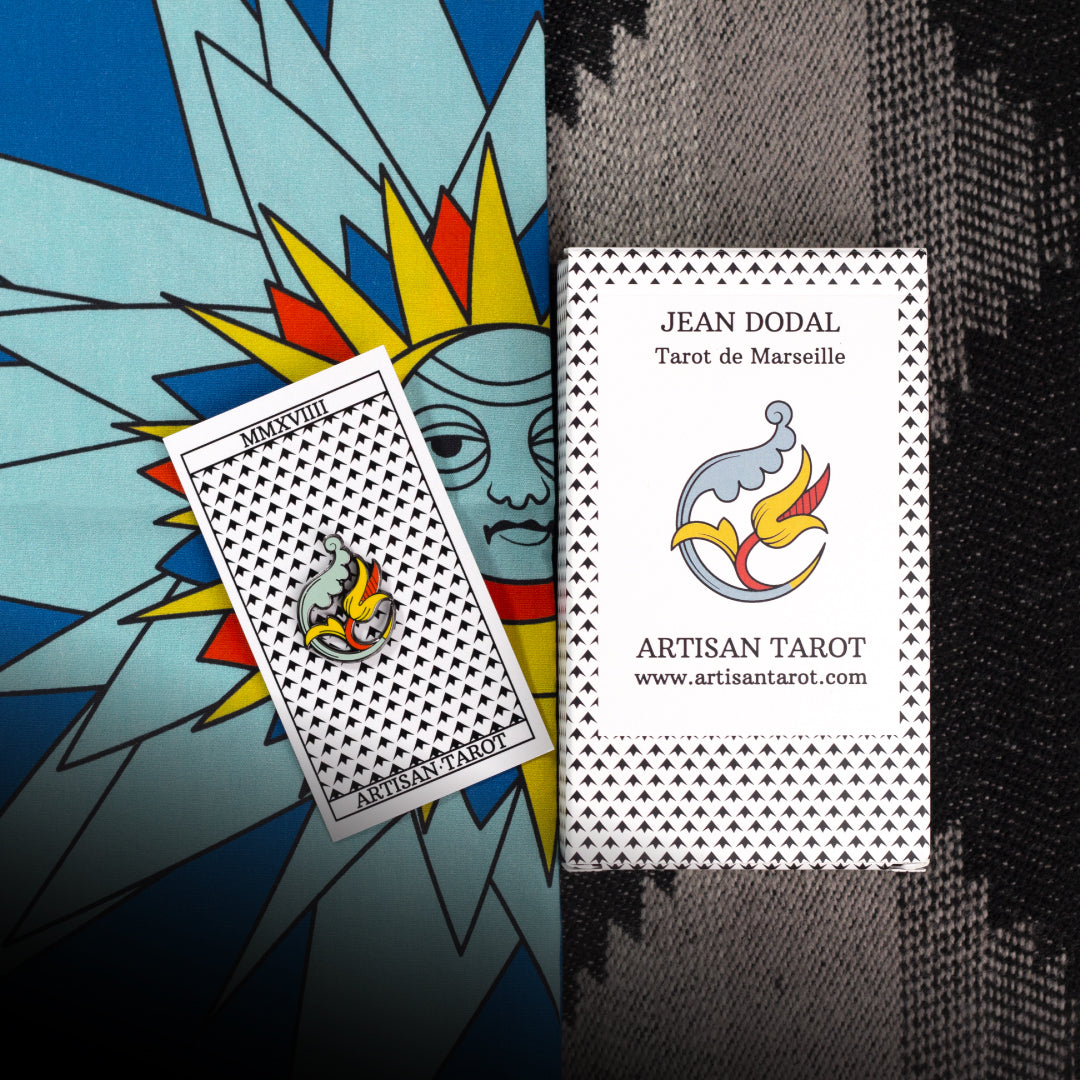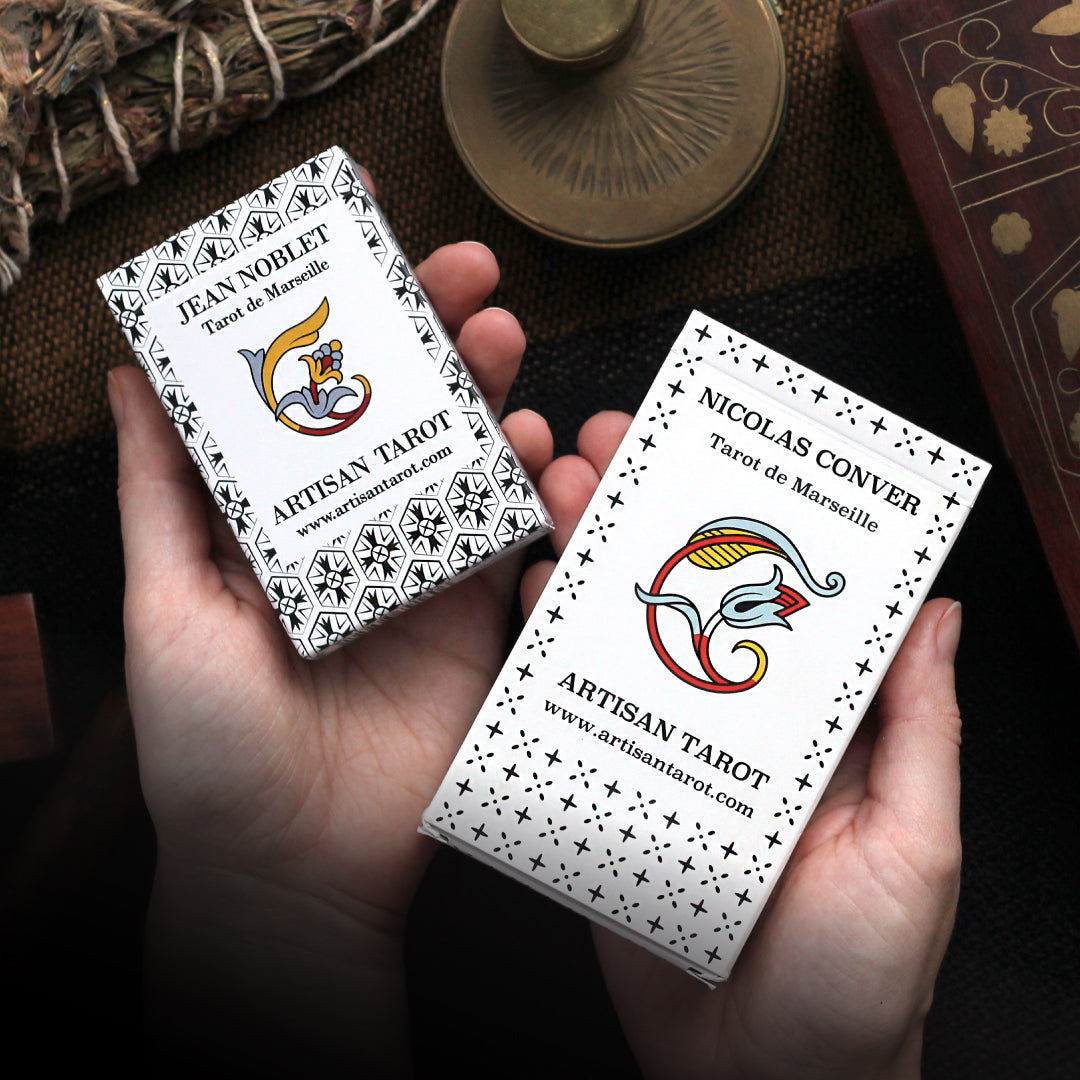GRAND DRAGON ROUGE
(The Great Red Dragon)
And behold a great red dragon, having seven heads and ten horns, and seven crowns upon his heads. And his tail drew the third part of the stars of heaven, and did cast them to the earth.
- Revelation 12: 3–4
William Blake, who lived from 1757 to 1827, was an English poet, painter, and printmaker whose expressive and creative art was full of symbolism and drama. The Great Red Dragon paintings are a series of watercolor paintings that depict "The Great Red Dragon" in various scenes from the Book of Revelation.
Since Alejandro is a great admirer of Blake's work, and especially of this watercolor, he made his version of The Great Red Dragon inspired by the Devil card from the Tarot de Marseille.
In Alejandro’s depiction, the dragon has eyes on the back of its knees from The Devil and its head bears the tonsure of the acolytes of The Pope. The woman lying on the sea waves is the maiden in The Star, but here she appears as in Blake’s other painting Clothed with the Sun.
Will the maiden be eaten by the dragon or will she be offered up as a sacrifice to the arcane gods? Or perhaps she has tamed the Great Beast with her striking beauty.
LE CHEVAL DE LA MORT
(Death's Horse or Knight, Death and the Devil)
Albrecht Dürer, who lived from 1471 to 1528, was a German painter, printmaker, and theorist of the German Renaissance. His engraving Knight, Death and the Devil is one of the three Meisterstiche (master prints). The meaning of the symbolism and iconography has been argued for centuries, however, for tarot lovers and enthusiasts, the relationship it has with tarot is evident.
In Alejandro’s depiction, an armored knight carries a bundle over his shoulder in a similar fashion to The Fool. He rides his horse down a road and is accompanied by his dog. Behind his horse is a fire-breathing Devil from the Tarot de Jacques Vieville and Death, from the Nicolas Conver Tarot, holds an hourglass which is a reminder of the shortness of life.
You may interpret this as a knight who is insisting on traveling towards the past (left), perhaps because he feels the flames from The Devil on his back. However, Death, the stern teacher, is blocking his way; the only way forward is moving towards the future (right). Death is reminding him that he must face his own demons.
LE VOL DES SORCIERES
(Witches' Flight)
Francisco de Goya, who lived from 1746 to 1828, was a Spanish romantic painter and printmaker. The Witches' Flight is a homonymic oil on canvas painting which is part of a series of six paintings related to witchcraft.
In Alejandro’s depiction, three semi-nude witches are wearing penitential capirotes and are hovering in the air while grabbing a nude figure. They are biting the victim as if to devour him or suck his blood. The three witches represent the alchemical Tria Prima (Mercury, Salt, and Sulfur), their animal ears, tails, and wings are inspired by The Devil from the Nicolas Conver Tarot.
Below, two figures hide from the eyes of the witches. One of them is laying on the ground and is covering his face in fear. The other is attempting to escape by covering himself with a blanket. On the right, a donkey is eating grass, indifferent to the supernatural scene.
Who do you most identify with in this artwork? How would you react if you stumbled upon this scene?
